Turpentine tree
Scientific name: Bursera simaruba
POWO Status: Tree
IUCN Red List threat level: Least Concern
GPS Location: 17° 42′ 56.89″ N, 64° 49′ 46.36″ W
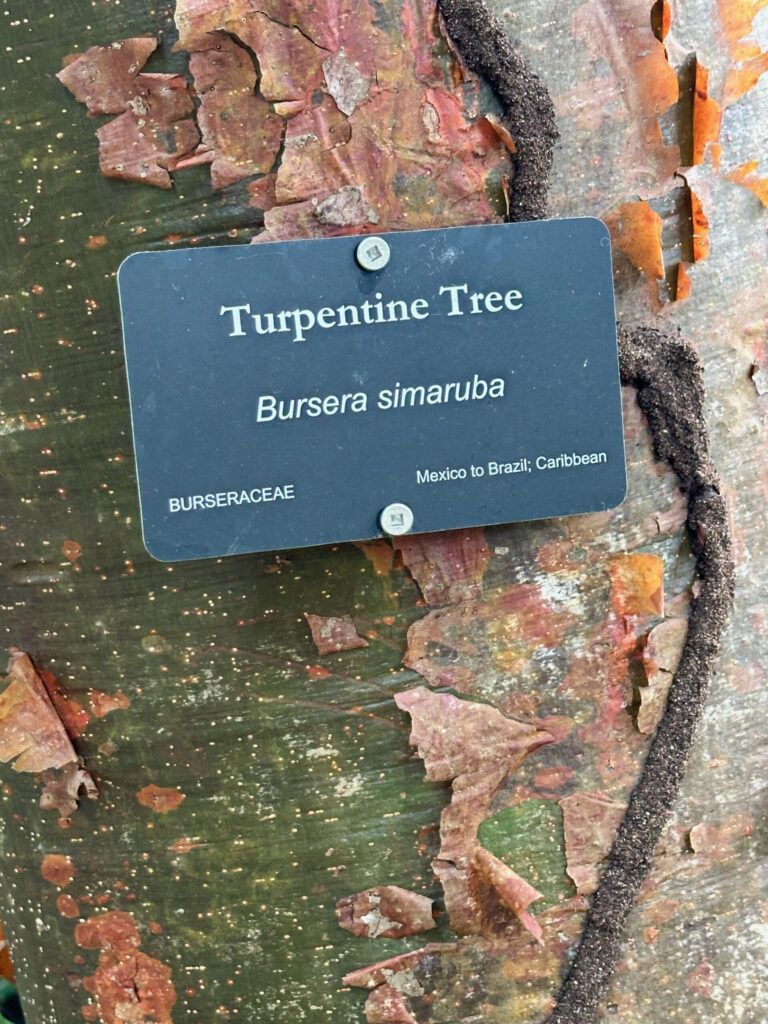
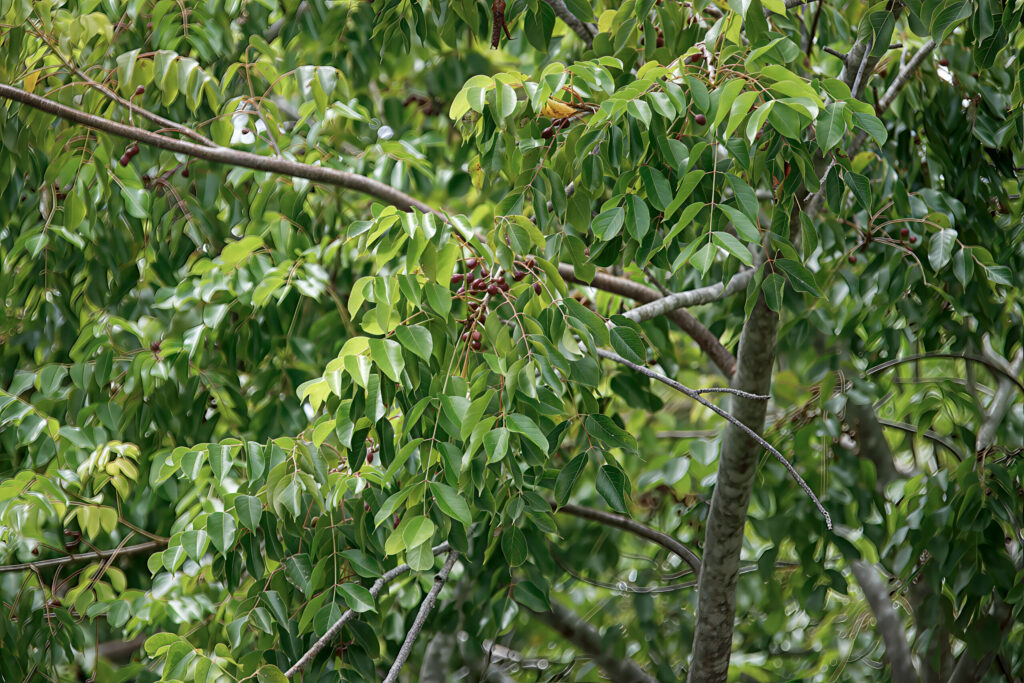
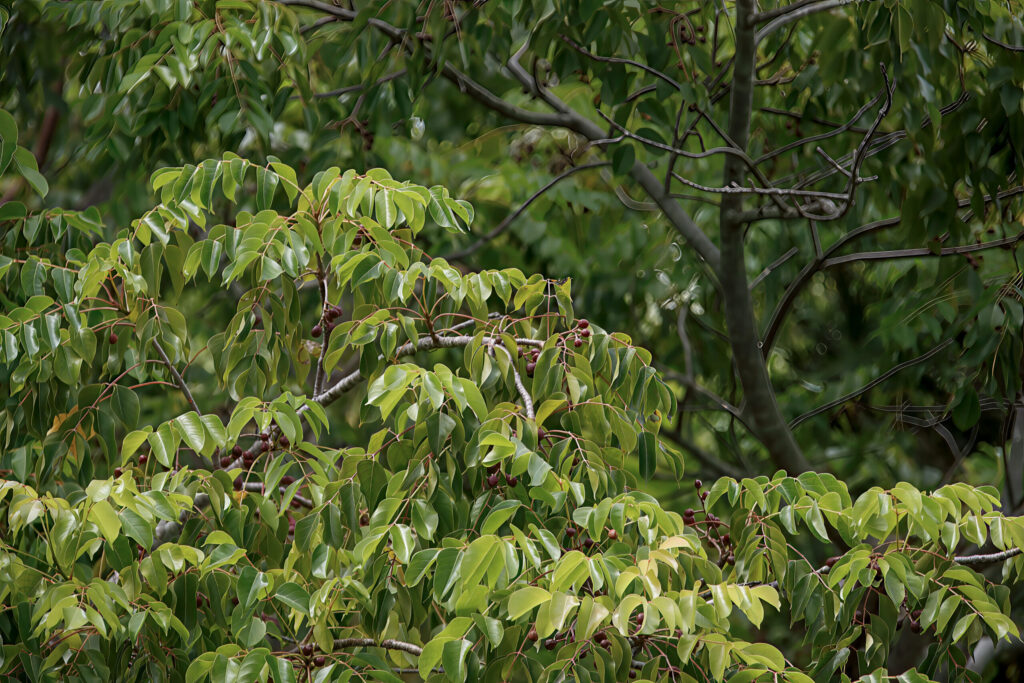
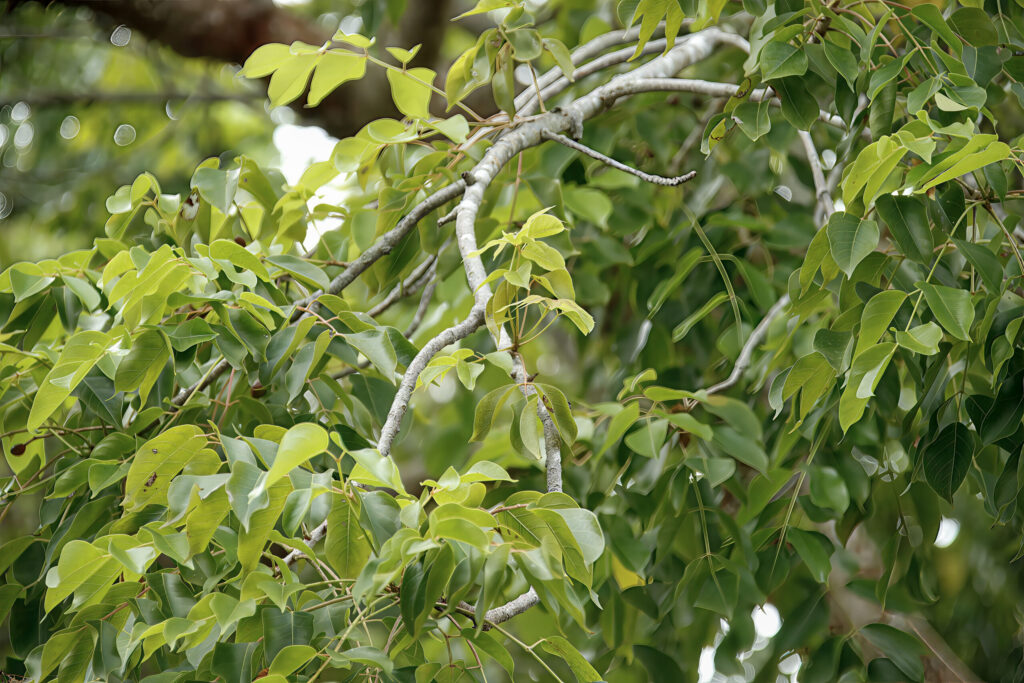
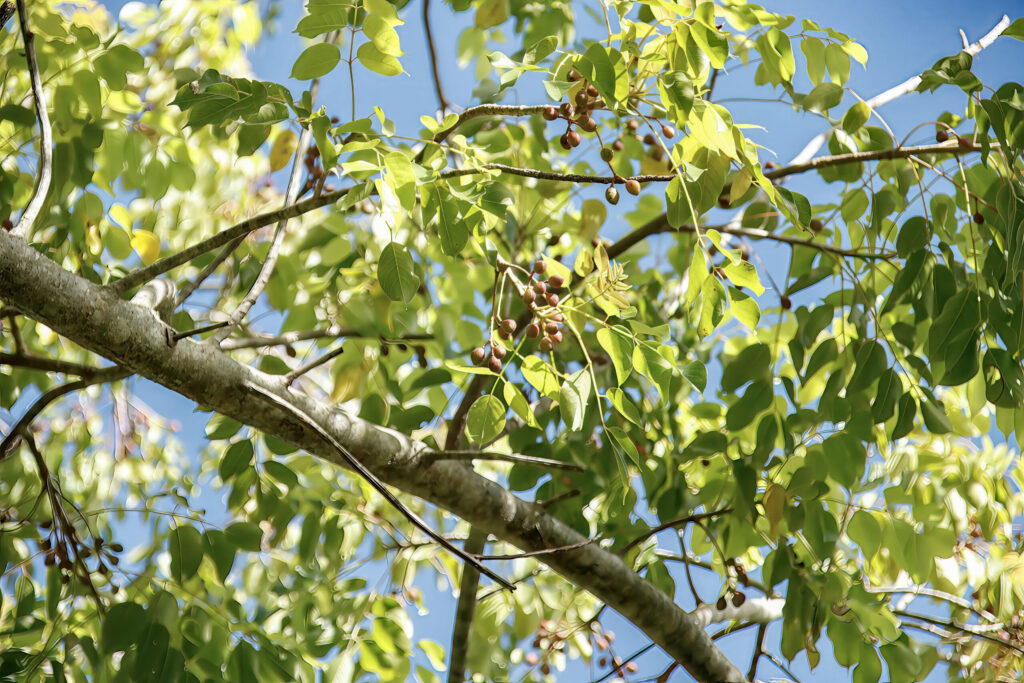
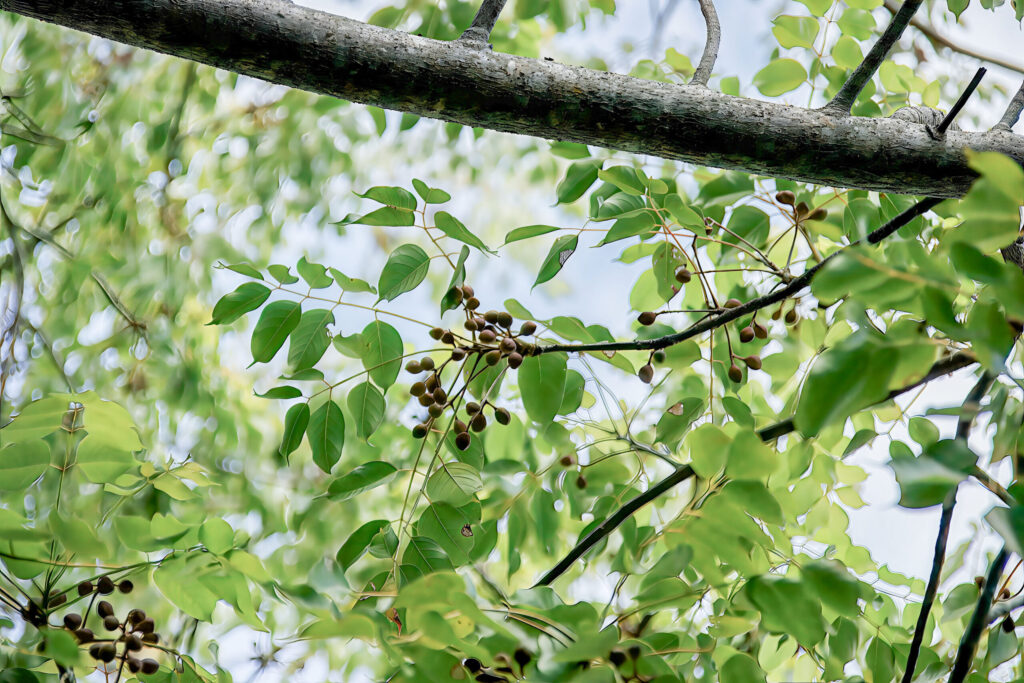
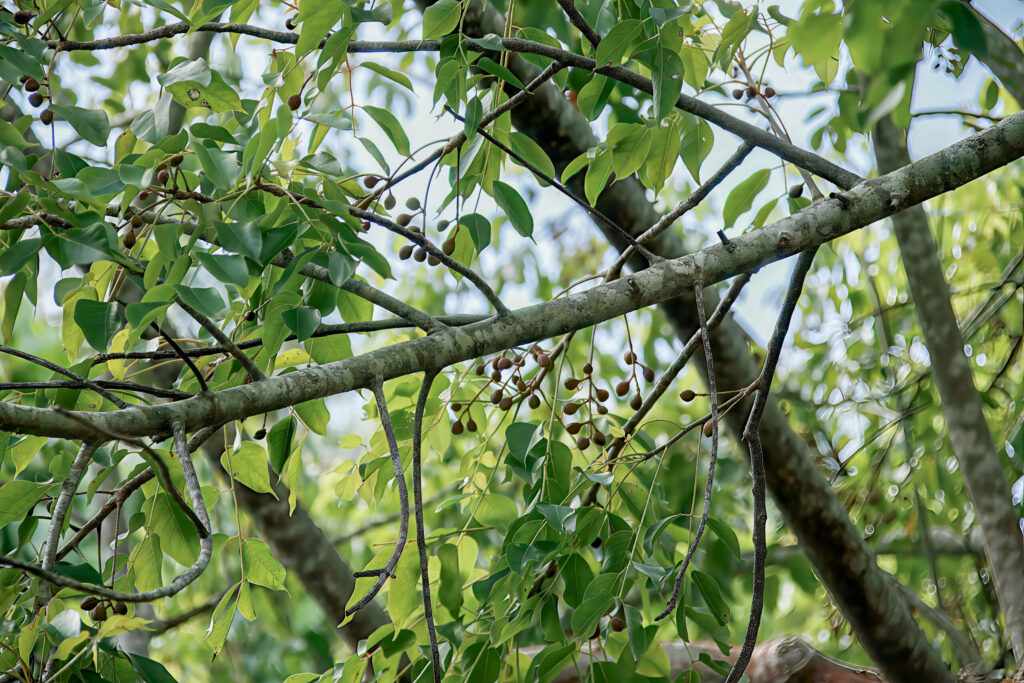
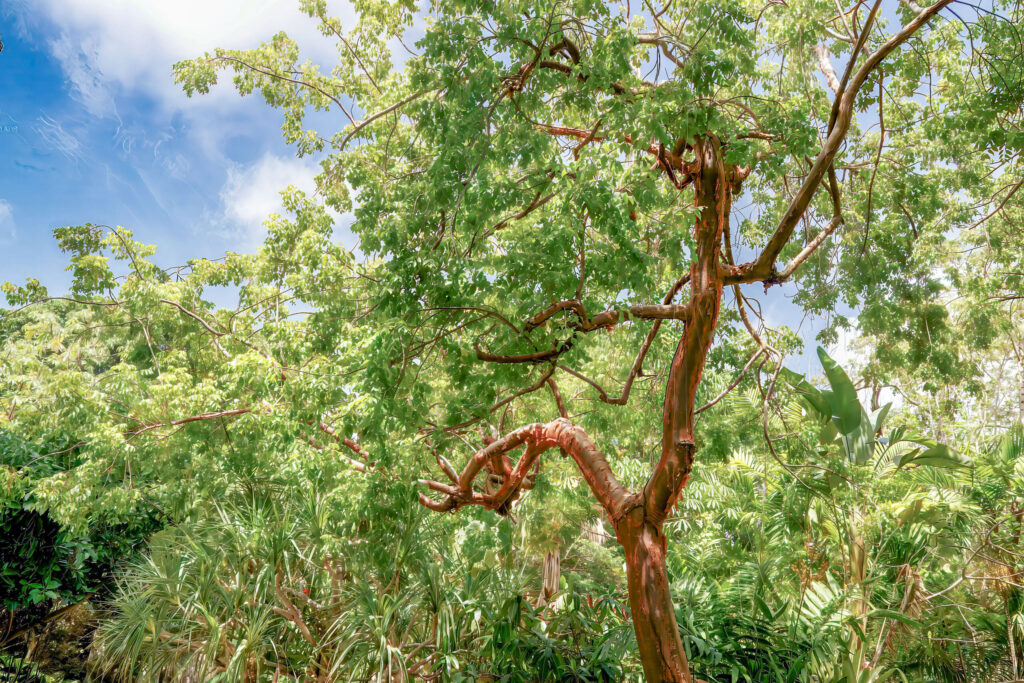
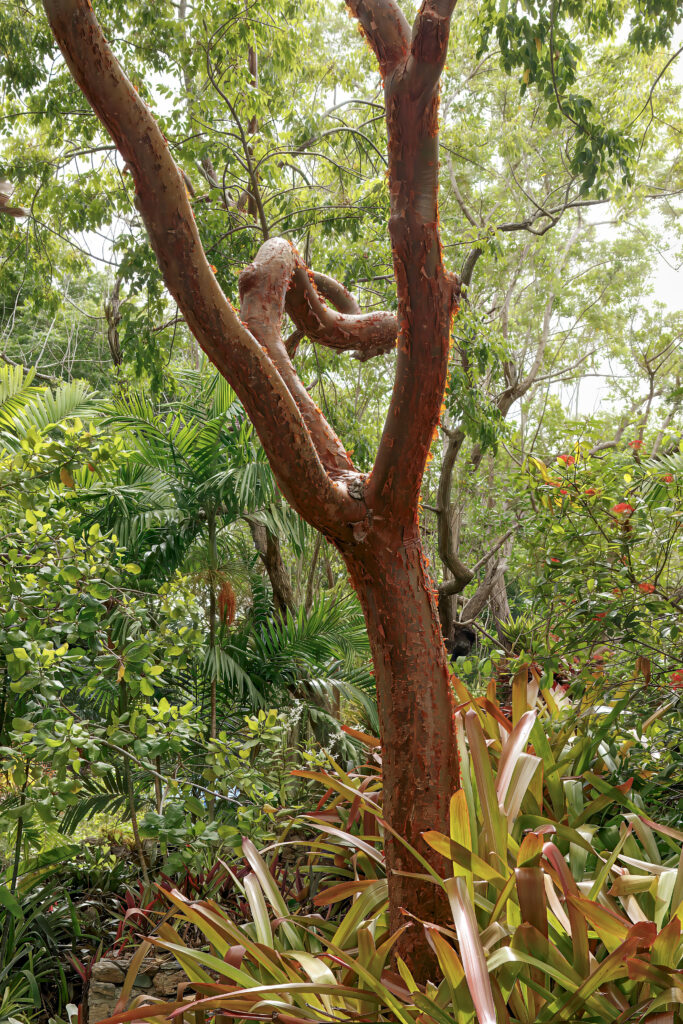













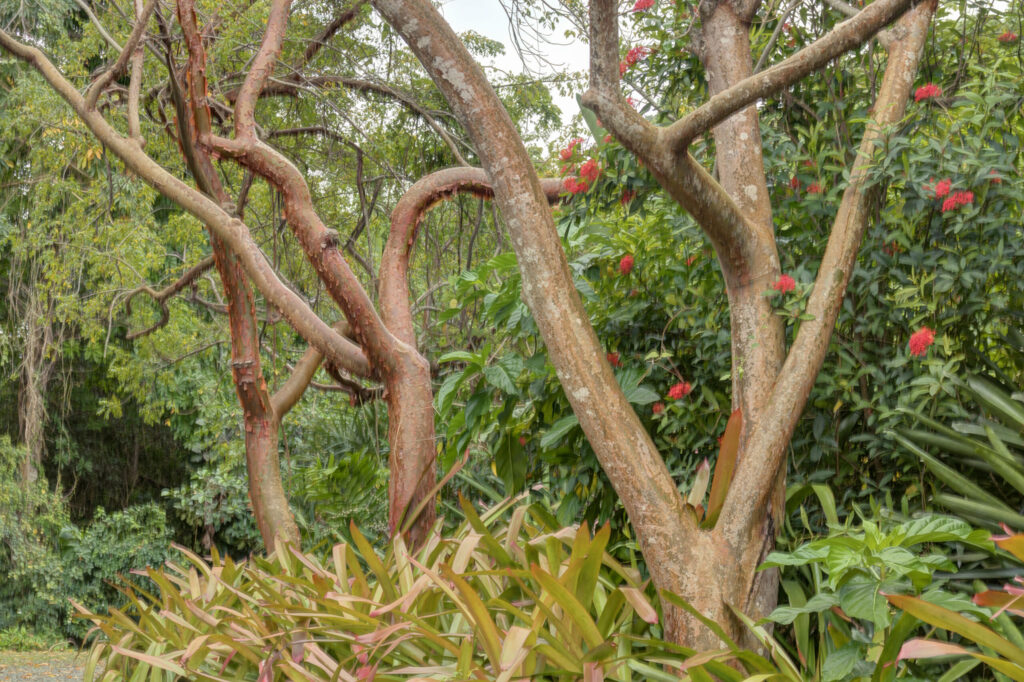



Observations:
Phenological Markers for Turpentine Tree (Bursera simaruba)
1. Leaf Drop and Leaf Flush
Although often labeled as “evergreen,” Bursera simaruba is actually deciduous or semi-deciduous, especially in response to dry-season stress.
- Trees may lose most or all of their leaves during prolonged dry periods.
- Leaf flush typically follows the first significant rains or shift into the wet season.
- New leaves emerge quickly and are soft, bright green, and compound.
Observation tips:
- Record first signs of leaf yellowing or browning.
- Track peak defoliation (if full leaf drop occurs).
- Note first appearance of new leaflets and duration of full canopy recovery.
In St. Croix, you may see partial defoliation during the drier months (Dec–Apr) and flushes beginning around May or June, depending on rainfall.
2. Flowering
Flowers are small, greenish-white, and grow in clusters (inflorescences). While not showy, they are important phenological indicators.
- Flowering tends to occur before or just after the onset of new leaves.
- This often happens in the transition between dry and wet seasons.
Observation tips:
- Watch for inflorescence development on bare or newly leafed branches.
- Document first bloom, peak bloom, and end of flowering.
- Note insect activity, as flowers attract bees and small pollinators.
3. Fruit Development
Fruits are small, dry drupes—oval and about the size of a small grape—often with red or orange coloring when mature.
- Fruiting follows flowering and may overlap with new leaf growth.
- Mature fruits typically split open to expose a single black seed, often with a red aril, attracting birds.
Observation tips:
- Track fruit set, noting early vs. mature stages.
- Record fruit color change and seed exposure.
- Observe fruit drop or removal by wildlife (especially birds like tanagers or thrashers).
4. Bark Behavior and Lichen/Epiphytes
The red, papery bark peels year-round but may intensify during growth spurts or following rainfall. Bark surfaces are often host to lichens and mosses, which can show seasonal variation.
Observation tips:
- Note changes in bark exfoliation (increase/decrease).
- Photograph bark monthly to monitor lichen or moss density as a microclimate indicator.
Summary Table for Turpentine Tree Phenophases
| Phenophase | Description | Approx. Timing (St. Croix) |
|---|---|---|
| Leaf drop | Partial or complete in dry season | Dec–Apr |
| Leaf flush | New leaves emerge, bright green | Apr–Jun (after rains) |
| Flowering | Small green-white flowers on branches | Mar–Jun (varies with rainfall) |
| Fruiting | Red/orange drupes split to reveal seed | May–Jul or overlapping flowering |
| Bark activity | Year-round peeling; increases post-rain | Year-round, esp. wet season |
